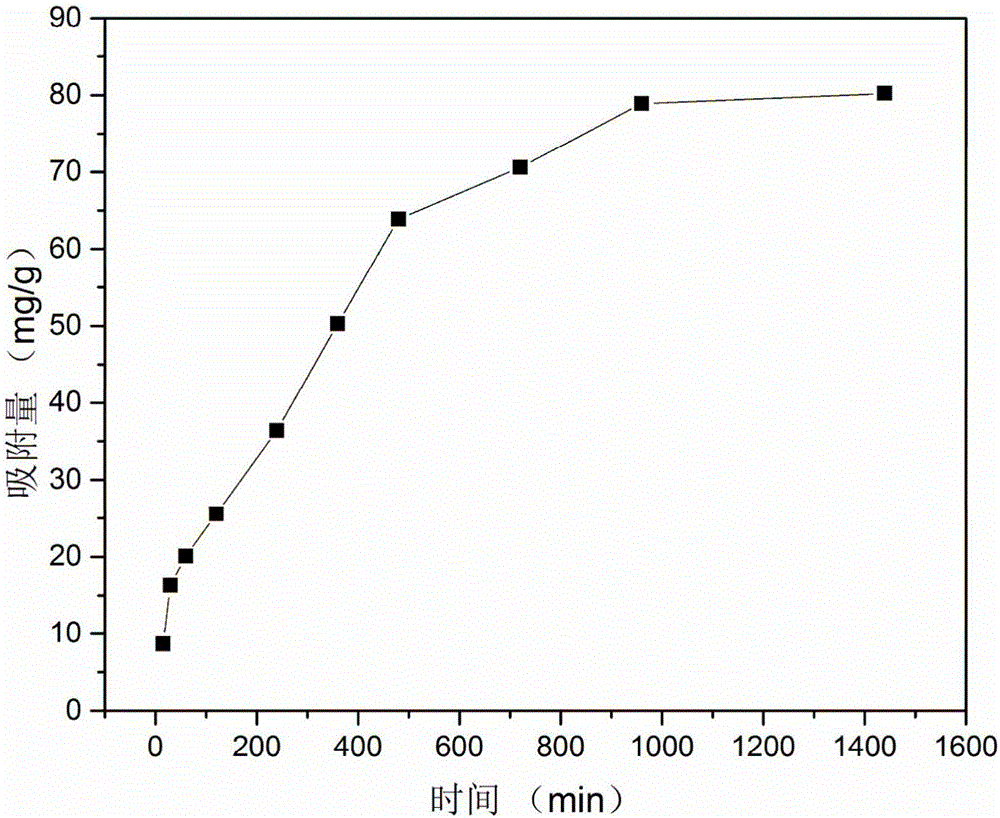Preparation method of clay mineral modified biochar and application thereof
A technology of biochar modification, applied in chemical instruments and methods, water pollutants, other chemical processes, etc., to achieve the effect of wide sources, short production cycle and low price
- Summary
- Abstract
- Description
- Claims
- Application Information
AI Technical Summary
Problems solved by technology
Method used
Image
Examples
Embodiment 1
[0024] A specific preparation method of the attapulgite modified biochar material of the present invention is as follows:
[0025] Weigh 20g of anhydrous zinc chloride solid and dissolve it in water, then add montmorillonite powder and biomass to the zinc chloride solution at a mass ratio of 1:2, stir or ultrasonically disperse and immerse for 24 hours. Wherein the mass ratio of biomass and zinc chloride is 1:2. The samples were placed in an oven at 70°C for 24h. The dried sample was placed in a horizontal tube furnace, and the quartz tube of the atmosphere furnace was kept sealed during the pyrolysis process, and N was introduced into the tube at a flow rate of 300 mL / min. 2 , in order to maintain the anaerobic conditions of the whole pyrolysis process, and at the same time increase the heating rate to 600°C at a heating rate of 10°C / min, and keep the temperature for 1.5h. After cooling to room temperature, wash with 1mol / L hydrochloric acid solution several times to remove...
Embodiment 2
[0028] The attapulgite-modified biochar material of the present invention treats the estrogen pollutant 17β-estradiol in the water body, comprising the following steps:
[0029] Take 100mL of 1-8mg / L17β-estradiol solution in conical flasks, add 0.005g attapulgite-modified biochar material into each conical flask, place it in a constant temperature oscillator in a water bath, and set it at 25°C The next reaction. After 24 hours, 10 mL of the solution was taken from each Erlenmeyer flask for centrifugation, and after centrifugation, it was filtered through a 0.45 μm filter membrane, and the filtrate was taken into a centrifuge tube. Fluorescence photometer was used to detect the solution concentration after reaction. The result is as figure 2 shown.
[0030] Depend on figure 2 It can be seen that under the condition of different initial concentration of 17β-estradiol, the attapulgite-modified biochar material has a strong adsorption capacity for 17β-estradiol in water. Un...
Embodiment 3
[0032] The attapulgite-modified biochar material of the present invention treats the estrogen pollutant 17β-estradiol in the water body, comprising the following steps:
[0033] Add 0.005g of attapulgite-modified biochar material into 100mL of 6mg / L 17β-estradiol solution, place in a water bath constant temperature oscillator, and react at 25°C. At different time intervals, 10 mL of the solution was taken for centrifugation, filtered through a 0.45 μm filter membrane after centrifugation, and the filtrate was taken into a centrifuge tube. Fluorescence spectrophotometer was used to detect the concentration of the solution after reaction. The results of the adsorption capacity at different times are attached image 3 shown.
[0034] Depend on image 3 It can be seen that the adsorption amount of attapulgite-modified biochar materials to 17β-estradiol in water increases continuously with the increase of time. Between 10min and 450min, the adsorption capacity increased rapidly...
PUM
| Property | Measurement | Unit |
|---|---|---|
| adsorption capacity | aaaaa | aaaaa |
| adsorption capacity | aaaaa | aaaaa |
Abstract
Description
Claims
Application Information
 Login to View More
Login to View More - R&D
- Intellectual Property
- Life Sciences
- Materials
- Tech Scout
- Unparalleled Data Quality
- Higher Quality Content
- 60% Fewer Hallucinations
Browse by: Latest US Patents, China's latest patents, Technical Efficacy Thesaurus, Application Domain, Technology Topic, Popular Technical Reports.
© 2025 PatSnap. All rights reserved.Legal|Privacy policy|Modern Slavery Act Transparency Statement|Sitemap|About US| Contact US: help@patsnap.com



